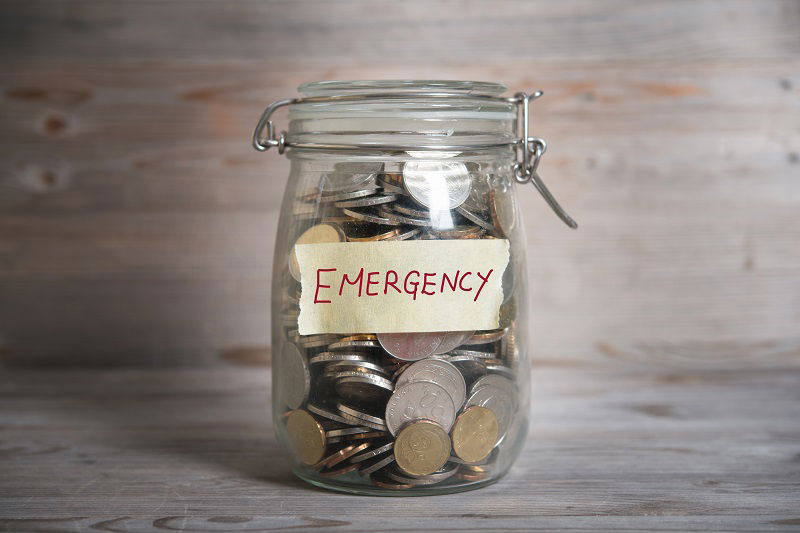A surprise car repair. A medical bill. A missed paycheck. Emergencies don’t wait until you’re ready—and without savings, one unexpected expense can throw everything off. That’s where an emergency fund comes in. It’s not just a good idea. It’s your financial safety net.

Even if you’re living paycheck to paycheck, saving $1,000 in just 90 days is possible. This guide will show you exactly how to do it—without relying on credit cards or going into panic mode.
Why Emergency Funds Matter
One unexpected expense can set you back fast. A blown tire, a broken fridge, or a medical bill you didn’t plan for can throw off your entire budget. Without a backup plan, you might turn to a credit card or loan—adding even more stress to an already difficult situation.
An emergency fund gives you breathing room. It’s money you’ve set aside specifically for things you didn’t see coming. When something breaks or life gets hard, you’ll be glad you have it.
How much should you save for an emergency fund?
Experts often recommend saving three to six months of basic living expenses. That’s a good long-term goal, but don’t let it stop you from getting started. Focus on your essentials—rent or mortgage, food, utilities, insurance, and gas.
Start small. A $1,000 emergency fund can cover most unexpected repairs or bills. Once you reach that, you’ll be in a stronger position to build toward a larger cushion.
Where to Keep Emergency Fund
Your emergency fund should be easy to access—but not too easy. A high-yield savings account is a smart choice. It earns interest while keeping your money separate from your everyday spending.
Avoid storing it in a checking account, where you’re more likely to spend it. You can also set up automatic transfers each payday, so your savings grows in the background without extra effort.
How to Save $1,000 in 90 Days
Reaching a $1,000 savings goal in three months might feel like a stretch, but it’s possible with the right plan. Here are four ways to make it happen:
Step 1: Cut Everyday Spending That Doesn’t Matter
Look at where your money goes each week. Daily coffee runs, streaming services you barely use, or extra takeout meals can add up quickly.
Replace small habits with cheaper ones:
- Make coffee at home: Saving $4 a day adds up to $360 in 90 days.
- Cut unused subscriptions: Cancel services you don’t really need. That’s an easy $20–$50 a month.
- Switch to a cheaper phone plan: If you’re overpaying for data, you can easily save $30 or more.
Take a hard look at your monthly bills. If your cable bill is over $100, you could switch to internet-only service for half the price. That alone could free up $200+ in three months.
Put every dollar you save into your emergency fund. With just a few small changes, you could hit $600–$700 without picking up extra work.
Step 2: Sell Things You Don’t Use Anymore
Chances are, you have stuff sitting around that you no longer use. Clothes that don’t fit. Old electronics. Unused furniture. It’s time to turn them into cash.
Pick one room each week and look for things to list. Post them on Facebook Marketplace, eBay, or sell them at a consignment shop. If you sell 10 items for $20 each, you’re already $200 closer to your goal.
Don’t focus on making top dollar. Focus on clearing space and stacking up savings. Every sale gets you one step closer.
Step 3: Find Simple Ways to Earn Extra Money
If you can add even $50 a week to your income, that’s $600 in 90 days. You don’t need a second job—you just need something flexible that fits into your schedule.
- Offer a service: Babysitting, dog walking, yard work, or tutoring can bring in quick cash.
- Pick up gig work: Deliver food with DoorDash, shop for groceries with Instacart, or give rides with Uber or Lyft.
- Try micro jobs: Apps like TaskRabbit or sites like Upwork let you earn from one-off jobs in your area or online.
Look for ways to earn without adding stress. A few hours a week can make a big difference.
See also: 50 Best Side Hustle Ideas to Earn Extra Money
Step 4: Use Any Windfalls to Boost Your Savings
If you get a tax refund, birthday money, or a rebate check, don’t spend it. Drop it straight into your emergency fund. Even a $200 windfall puts you a fifth of the way there with no extra work.
Treat found money like fuel for your goal. The faster you hit $1,000, the sooner you’ll have peace of mind.
What to Do After You Hit $1,000
Once you reach your $1,000 target, take a breath. You’ve built a safety net that can catch the most common financial surprises.
Next, shift your focus. Start paying off high-interest debt or keep building your emergency fund until it covers three to six months of expenses. Some people also build a separate rainy day fund for smaller, less urgent expenses like car maintenance or home repairs.
Either way, you’ve built momentum—don’t stop now.
Final Thoughts
Saving $1,000 in 90 days isn’t always easy, but it is doable. Cut a few costs, sell what you don’t use, bring in some extra income, and use any surprise cash to give your savings a boost.
When the next unexpected expense shows up—and it will—you’ll be ready. That’s the kind of financial confidence that changes everything.
Frequently Asked Questions
What counts as a real emergency?
A real emergency is something unexpected that affects your health, safety, income, or ability to function day to day. Examples include medical bills, car repairs, job loss, or a sudden drop in income. Things like concert tickets or vacation deals don’t count—even if they feel urgent in the moment.
Should I pause retirement contributions to build an emergency fund?
If you don’t have at least $1,000 saved, it’s usually a good idea to temporarily pause retirement contributions and focus on your emergency fund. Once you’ve built that cushion, you can go back to saving for retirement without worrying about unexpected expenses.
How often should I add money to my emergency fund?
Consistency is more important than the amount. Aim to contribute something every week or with each paycheck, even if it’s just $10 or $25. You can also boost your fund with any extra income or one-time cash you receive throughout the year.
Is it okay to use a savings app to build my emergency fund?
Yes, as long as the app is FDIC-insured and allows quick access to your money when needed. Some apps round up your purchases or automate small transfers, which can help you build savings without thinking about it.
What happens if I need to use my emergency fund?
That’s exactly what it’s there for. Use the money when something unexpected comes up that you can’t cover with your regular income. Once the emergency is handled, start rebuilding the fund as soon as you can.




